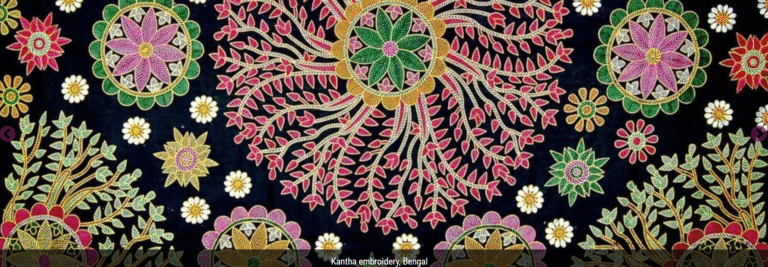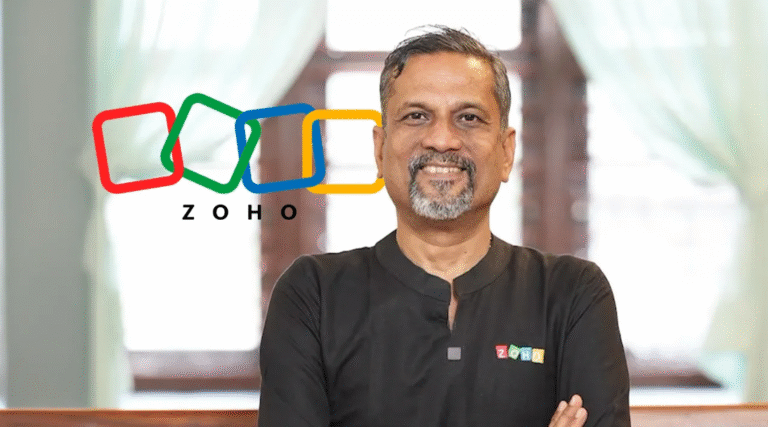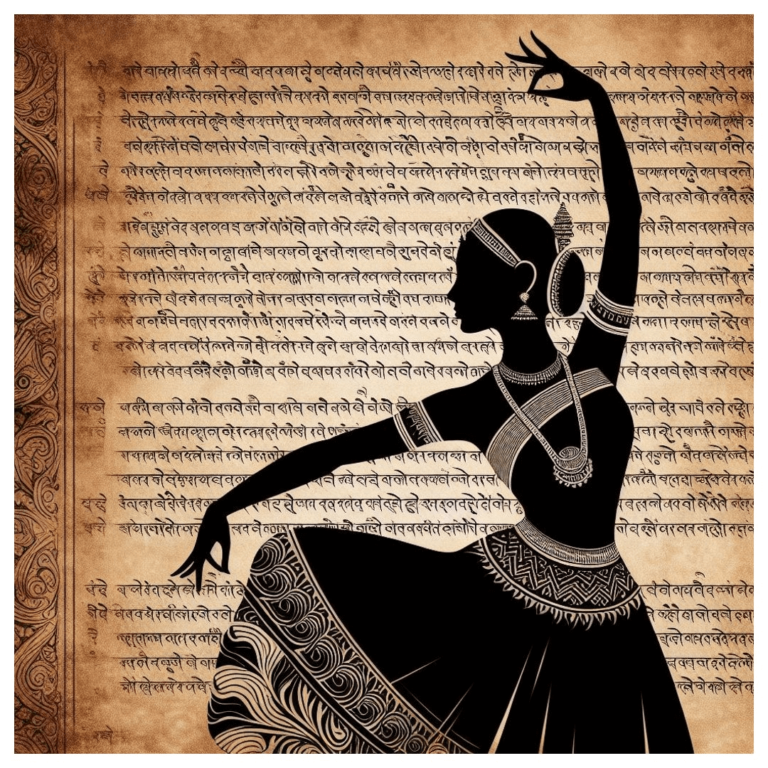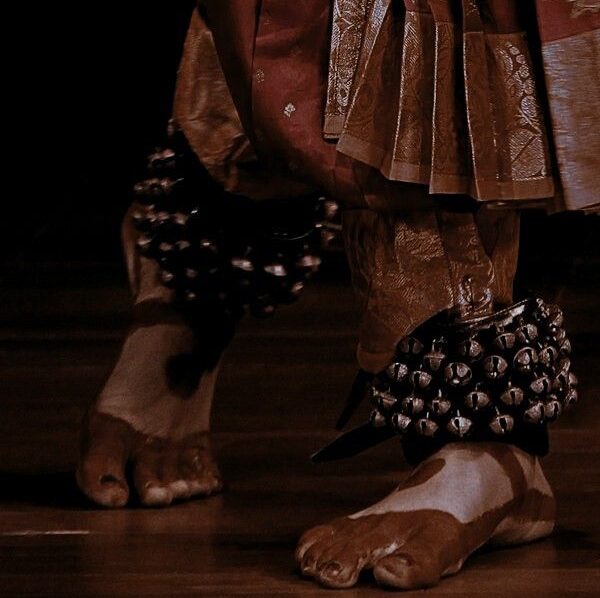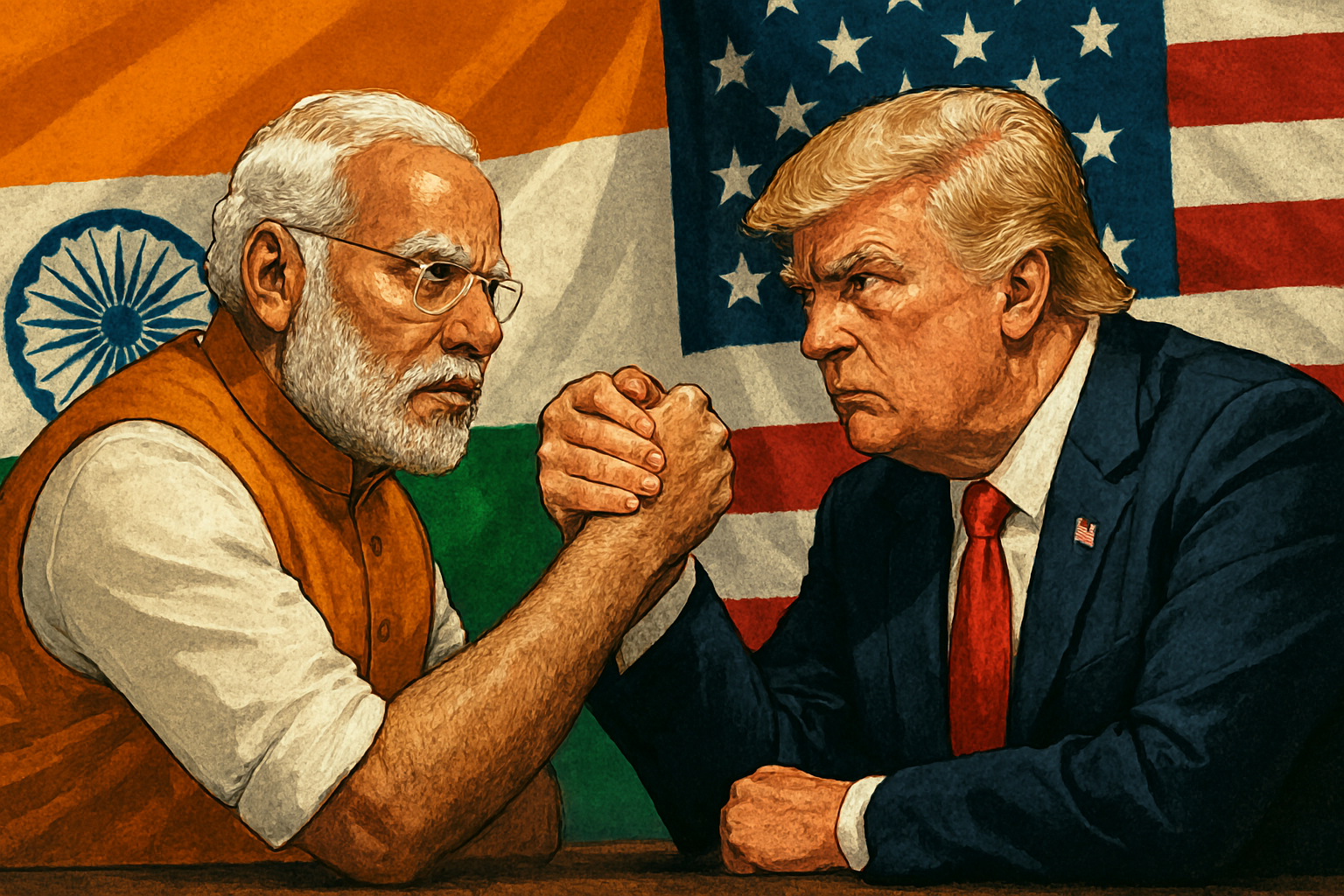
The United States’ decision to impose steep tariffs of up to 50% on Bharat’s exports has created fresh economic uncertainty for Asia’s third-largest economy. As trade ties strain under geopolitical pressure, the Modi government is betting on a mix of strategic diplomacy and cultural soft power to absorb the shock.
The Tariff Threat
The tariff hike announced in late August targets Bharat’s textiles, gems, shrimp, furniture, and other major export categories, directly affecting industries that employ millions.
- Textiles alone, worth nearly $20 billion annually, may see revenue growth cut by half year-on-year, according to industry analysts.
- The gems and jewellery sector, which relies heavily on the U.S. market, faces steep declines in orders.
- Overall, Bharat’s $87 billion in annual exports to the U.S. could shrink to nearer $50 billion if the tariffs persist.
Adding to the pressure, the rupee slipped toward ₹88 per U.S. dollar, its weakest level in years. This currency slide makes imports more expensive and raises inflationary risks at home.
Despite these headwinds, Chief Economic Adviser V. Anantha Nageswaran insists the tariff shock will be short-term, projecting GDP growth of 6.3–6.8% in FY26. Exporters are also moving quickly to diversify markets by targeting Europe, Latin America, and Africa.
Modi’s Strategic Cushion
Prime Minister Narendra Modi’s immediate response has been to double down on Bharat’s long-held policy of strategic autonomy. Rather than buckle under U.S. pressure, New Delhi is diversifying its diplomatic and economic bets.
At the Shanghai Cooperation Organization (SCO) summit in Tianjin, Modi reinforced ties with Russia, describing the relationship as “special and privileged.” This alignment signals that Bharat will not abandon energy imports from Moscow despite Washington’s displeasure.
At the same time, New Delhi is deepening partnerships with ASEAN, the Gulf, and the EU to cushion against over-dependence on the U.S. Such a balancing act underlines Modi’s effort to keep Bharat’s foreign policy multi-aligned, ensuring no single external shock derails its growth trajectory.
Soft Power as a Buffer
Beyond trade and diplomacy, the government is projecting Bharat’s civilizational identity as a form of resilience. Soft power becomes not just an image-building tool but also a strategic cushion when hard power encounters limits.
- Yoga diplomacy remains Bharat’s most visible cultural export. International Yoga Day, celebrated across 190 nations, projects Bharat’s image as a source of peace and wellness even when trade ties are tense.
- Buddhist outreach and initiatives like Project Mausam strengthen cultural bonds across the Indian Ocean and Southeast Asia, building bridges outside purely economic channels.
- The Indian diaspora, particularly in the U.S., continues to showcase Bharat’s modern success story, from Silicon Valley boardrooms to American politics.
- Education-focused initiatives such as Study in India and reforms under NEP 2020 position Bharat as a global hub of knowledge, blending ancient traditions with modern learning.
Domestically, Modi’s cultural symbolism—from the consecration of the Ram Mandir in Ayodhya to national broadcasts like Mann Ki Baat—serves a dual purpose: consolidating national identity at home and projecting civilizational confidence abroad.
Between Pressure and Projection
The clash between hard economic pressure and soft cultural influence defines Bharat’s current moment. Tariffs may erode export revenues and currency stability, but soft power provides a buffer—shaping how the world perceives Bharat and giving it diplomatic room to maneuver.
Modi’s strategy is therefore twofold: absorb the tariff hit in the short term through market diversification and amplify Bharat’s cultural and civilizational strengths to project long-term resilience.
Whether this blend of hard strategy and soft projection can fully cushion the blow remains uncertain. Yet one truth is clear: Bharat is playing a long game, where exports and tariffs are only part of the story—the larger narrative is about identity, influence, and the quiet strength of culture.
Sources:
- Washington Post – India braces as 50 percent U.S. tariffs come into effect
- AP News – Modi and Putin affirm special relationship as India faces steep U.S. tariffs
- Times of India – CEA on tariff impact, GDP growth outlook
- Financial Times – Export losses and market shifts
- Economic Times – Garment industry fears revenue halving

